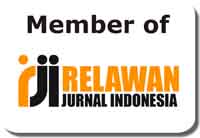EFL Students' Practices of Self-Regulated Language Learning in Speaking
Abstract
Keywords
Full Text:
PDFReferences
Ahmadzadeh, R., and S. Zabardast. 2014. Learner autonomy in practice. International Journal on New Trends in Education and Their Implications. 5(4): 54–55.
Alhadi, S. & Supriyanto, A. (2017). Self-regulated learning concept: Student learning progress. Prosiding Seminar Nasional: Peran Bimbingan dan Konseling dalam Penguatan Pendidikan Karakter. Universitas Ahmad Dahlan
Allwright, R. L. (1988). “Autonomy and individualization in whole-class instruction.” In individualization and autonomy in language learning, edited by A. Brookes, and P. Grundy, 35–44. London: Modern English Publications and the British Council.
Ariyanti., Fitriana, R., & Pane, W. S. (2018). Self-regulated learning in writing of EFL learners. Indonesian Journal of English Language Teaching and Applied Linguistics, 3(1)
Armelia, M. N., & Ismail. (2021). Pengaruh self-regulated learning terhadap kemampuan berpikir reflektif matematis wiswa. Jurnal Cendekia: Jurnal Pendidikan Matematika, 5(2): 1757-1768.
Artelt, C., Demmrich, A., & Baumert, J. (2001). Selbstreguliertes Lernen (Self-regulated learning). In Deutsches PISA-Konsortium (Ed.), PISA 2000. Basiskompetenzen von Schulerinnen und¨Schulern im Internationalen Vergleich ¨ [PISA 2000. International comparison of pupils’ competencies] (pp. 271–298). Opladen: Leske & Budrich.
Asif, F. (2017). The anxiety factors among Saudi EFL learners: A study from English language teachers’ perspective. English Language Teaching, 10(6), 160–173
Azmi, S. (2016). Self-regulated learning salah satu modal kesuksesan belajar dan mengajar. Seminar ASEAN: 2nd Psychology & Humanity. UMM
Baghbankarimi, M. 2014. Learner autonomy in skill-based language improvement courses in an undergraduate ELT program. Famagusta: Eastern Mediterranean University (EMU)-Doğu Akdeniz Üniversitesi (DAÜ).
Balasooriya, C. D., Tetik, C., & Harris, P. (2011). Why is my design not working? The role of student factors. Research Papers in Education 26(2): 191–206. doi:10.1080/ 02671522.2011.561978
Bandura, A. (1986). Social foundations of thought and action: A social cognitive theory. Englewood Cliffs. New Jersey: Prentice‐Hall Inc.
Basri, F. (2020). Factors influencing learner autonomy and autonomy support in a faculty of education. Teaching in Higher Education, 1–16. doi:10.1080/13562517.2020.1798921
Bekleyen, N. (2007). An investigation of English teacher candidates' problems related to listening skill. Elektronik Sosyal Bilimler Dergisi, 6(21), 91-105.
Bell, B. S., & Kozlowski, S. W. J. (2008). Active learning: Effects of core training design elements on self-regulatory processes, learning, and adaptability. Journal of Applied Psychology, 93, 296–316.
Benson, P., & Voller, P. (Eds.). (2014). Autonomy and independence in language learning. New York, NY: Routledge.
Bokaerts, M., & Cacallar, E. 2006. How far have we moved toward the integration of theory and practice in self-regulation? Educational Psychological Review, 18, 199210
Borg, S., & Al-Busaidi, S. 2012. Learner Autonomy: English Language Teachers’ Beliefs and Practices. British Council ELT, 213, 1–45.
Braun, V., & Clarke, V. (2006) Using thematic analysis in psychology. Qualitative Re-search in Psychology, 3(2), 77-101
Brown, A. V. 2009. Students’ and teachers’ perceptions of effective foreign language teaching. The Modern Language Journal, 93(1): 46–60. doi:10.1111/j.1540-4781.2009.00827.x
Campbell, J., Smith, D., Boulton-Lewis, G., Brownlee, J., Burnett, P. C., Carrington S., & Purdie N. (2001). Students’ perceptions of teaching and learning. Teachers and Teaching: Theory and Practice, 7(2): 173–187. doi:10.1080/13540600120054964
Chan, M. (2015). Language learner autonomy and learning contract: A case study of language majors of a university in Hong Kong. Open Journal of Modern Linguistics, 5(2), 147–180. doi:10.4236/ojml.2015.52013
Chen, W., & Yu, S. (2019). Implementing collaborative writing in teacher-centered classroom contexts: student beliefs and perceptions. Language Awareness, 1–21. doi:10.1080/09658416.2019.1675680
Chien, C.-W. (2016). Taiwanese EFL undergraduates’ self-regulated learning with and without technology. Innovation in Language Learning and Teaching, 1–16. doi:10.1080/17501229.2016.1264076
Chuang, Y. Y. (2010). A study of using task-based approach to teach EFL speaking. Journal of National Formosa University, 29(4), 37–52
Cohen, L., Manion, L., Lecturer, P., & Morrison, K. (2007). Research methods in education (Sixth). Routledge.
Dang, T. T. (2012). Learner autonomy: A synthesis of theory and practice. The Internet Journal of Language, Culture and Society, 35, 52–67.
Ding, Y., & Shen, H. (2019). Delving into learner autonomy in an EFL MOOC in China: a case study. Computer Assisted Language Learning, 1–23. doi:10.1080/09588221.2019.1681464
Dornyei, Z., & Ryan, S. (2015). The psychology of the language learner revisited. New York, NY: Routledge.
Dylman, A. S., Champoux-Larsson, M., & Zakrisson, I. (2020). Culture, Language and Emotion. Online Readings in Psychology and Culture, 4(2). https://doi.org/10.9707/2307-0919.1167 Awareness, 1–21. doi:10.1080/09658416.2019.1675680
Ellianawati, S. W. (2012). Pengembangan bahan ajar fisika matematika berbasis self-regulated learning sebagai upaya peningkatan kemampuan belajar mandiri. Jurnal Pendidikan Fisika Indonesia, 8, 33-40
Ellis, R. (2008). Learner beliefs and language learning. Asian EFL Journal, 10(4): 7–25.
Ewijk, D. C., Dickhäuser, O., & Büttner, G. (2013). Assessing how teachers enhance self-regulated learning: A multi-perspective approach. Journal of Cognitive Education and Psychology, 12(3): 338–358. doi:10.1891/1945-8959.12.3.338
Golonka, E. M., Bowles, A. R., Frank, V. M., Richardson, D. L., & Freynik, S. (2014). Technologies for foreign language learning: A review of technology types and their effectiveness. Computer assisted language learning, 27(1), 70-105.
Grabe, W. (2009). Reading in a second language: Moving from theory to practice. New York, NY: Cambridge University Press.
Hassenzahl, M., & Tractinsky, N. (2006). User experience: A research agenda. Behaviour & Information Technology, 25(2), 91–97. https://doi.org/10.1080/01449290500330331
Heigham, J., & Croker, R. (2009). Qualitative research in applied linguistics: A practical introduction. Springer
Holec, H., 1981: Autonomy and foreign language learning. Oxford: Pergamon. (First published 1979, Strasbourg: Council of Europe)
Huang, J., & Benson, P. (2013). Autonomy, agency and identity in foreign and second language education. Chinese Journal of Applied Linguistics, 36(1), 7–28. doi:10.1515/ cjal-2013-0002
Ifenthaler, D. (2012). Determining the effectiveness of prompts for self-regulated learning in problem-solving scenarios. Journal of Educational Technology & Society, 15: 38–52
Juklová, K. (2013). How do university students learn: learning styles and approaches in the context of subjective quality of higher education teaching and learning effectiveness. New Educational Review, 33(3), 155-164.
Kahraman, S. 2015. An evaluation of an English language teaching education program in terms of teacher autonomy. International Online Journal of Education and Teaching/ ISSN: 2148- 225X 2 (2): 53–66.
Kalaja, P., Barcelos, A. M. F., Aro, M., & Ruohotie-Lyhty, M. (2016). Key issues relevant to the studies to be reported: Beliefs, agency and identity. In Beliefs, agency and identity in foreign language learning and teaching. London: Palgrave Macmillan.
Kang, Y. (2010). Self-regulatory training for helping students with special needs to learn mathematics (Doctoral dissertation). Retrieved from http://ir.uiowa.edu/etd/688
Kirk, H., Gray, K., Ellis, K., Taffe, J., & Cornish, K. (2017). Impact of Attention Training on Academic Achievement, Executive Functioning, and Behavior: A Randomized Controlled Trial. American Journal on Intellectual and Developmental Disabilities, 122(2), 97–117. doi:10.1352/1944-7558-122.2.97
Kistner, S., K. Rakoczy, B. Otto, E. Klieme, and G. Büttner. 2015. Teaching learning strategies: The role of instructional context and teacher beliefs. Journal for Educational Research Online, 7(1): 176–197.
Kizil, A. S., & Savran, Z. (2018). Assessing self-regulated learning: The case of vocabulary learning through information and communication technologies. Computer Assisted Language Learning.
Lai, C., & Gu, M. (2011). Self-regulated out-of-class language learning with technology. Computer Assisted Language Learning, 24(4): 317–335.
Li, X. (2017). Teaching beliefs and learning beliefs in translator and interpreter education: an exploratory case study. The Interpreter and Translator Trainer, 12(2): 132–151. doi:10.1080/1750399x.2017.1359764
Littlewood, W. (1999). “Defining and Developing Autonomy in East Asian Contexts.” Applied Linguists, 20(1): 71–94.
Martin, R. D., & Kennett, D. J. (2017). To be kind or not to be kind: The moderating role of self-compassion in the relationship between general resourcefulness and academic self-regulation. The Journal of Social Psychology, 158(5), 626–638. doi:10.1080/00224545.2017.1407286
Martínez Agudo, J. D. 2014. “Analyzing Spanish Learners’ Beliefs about EFL.” Porta Linguarum, 22: 285–301.
Marulis, L. M., & Neuman, S. B. (2010). The Effects of Vocabulary Intervention on Young Children’s Word Learning. Review of Educational Research, 80(3), 300–335. doi:10.3102/0034654310377087
McCabe, A., and U. O’Connor. 2014. “Student-centred Learning: The Role and Responsibility of the Lecturer.” Teaching in Higher Education, 19(4): 350–359.
Mercer, S. (2011). Language learner self-concept: Complexity, continuity and change. System, 39(3), 335–346. doi:10.1016/j.system.2011.07.006
Morshedian, M., Hemmati, F., & Sotoudehnama, E. (2016). Training EFL Learners in Self-Regulation of Reading: Implementing an SRL Model. Reading & Writing Quarterly, 33(3), 290–303. doi:10.1080/10573569.2016.1213147
Muraven, M., Baumeister, R. F., & Tice, D. M. (1999). Longitudinal Improvement of Self-Regulation Through Practice: Building Self-Control Strength Through Repeated Exercise. The Journal of Social Psychology, 139(4), 446–457. doi:10.1080/00224549909598404
Naderifar, A. (2018). The comparative effect of concept mapping and vocabulary notebook keeping on Iranian EFL learners’ self-regulation in vocabulary learning. Cogent Education, 5(1), 1–16. doi:10.1080/2331186x.2018.1491782
Nakata, Y. 2011. “Teachers’ Readiness for Promoting Learner Autonomy: A Study of Japanese EFL High School Teachers.” Teaching and Teacher Education, 27(5): 900–910.
O’Connor, P. J., Herring, M. P., & Caravalho, A. (2010). Mental health benefits of strength training in adults. American Journal of Lifestyle Medicine, 4(5), 377–396. doi:10.1177/1559827610368771
Orhan, F. (2007). Applying self-regulated learning strategies in a blended learning instruction. World Applied Sciences Journal, 2, 390–398. Retrieved from http://www.idosi.org/wasj/wasj2(4)/19.pdf
Ozan, C., Ercoskun, N. C., & Kincal, R. Y. (2015). The Turkish Adaptation of Self-regulated Learning Teacher Belief Scale. The Anthropologist, 22(2), 405–411. doi:10.1080/09720073.2015.1189189
Panen, P. & Sekarwinahyu. (1997). Belajar mandiri dalam mengajar di perguruan tinggi. Program Applied Approach. Bagian 2. Jakarta: PAU-PPAI, Universitas Terbuka.
Perry, N.E., Hutchinson, L., and Tauberger, C. (2008). Talking about teaching self-regulated learning: Scaffolding student teachers’ development and use of practices that promote selfregulated learning. International Journal of Educational Research, 47: 97108.
Phillips, D. K. (2002). Speaking What I Speak, Speaking Words not my Own: Hypomnemata in practice. Reflective Practice, 3(3), 279–291. doi:10.1080/1462394022000034532
Pintrich, P . R ., & DeGroot, E . V . (1990) . Motivational and self-regulated learning components of classroom academic performance . Journal of Educational Psychology, 82(1), 33–40 . doi: 10 .1037/0022-0663 .82 .1 .33
Pintrich, P. R. (2000). The role of goal orientation in self-regulated learning. In Handbook of Self-regulation, ed. M. Boekaerts, R. Pintrich and M. Zeidner, 452–502. San Diego, CA: Academic.
Putra, A. S., & Latifah, N. (2018). Students self-regulated learning (SRRL) dalam mata kuliah bahasa Inggris pada mahasiswa tahun keempat jurusan bahasa Inggris FKIP Universitas Muhammadiyah Tangerang. Jurnal Pendidikan dan Pengajaran Guru Sekolah Dasar, 1(1): 1-7
Reeve, J. 2009. Why Teachers Adopt a Controlling Motivating Style Toward Students and How They can Become More Autonomy Supportive. Educational Psychologist, 44 (3): 159–175.
Reeve, J., and H. Jang. 2006. What Teachers Say and Do to Support Students’ Autonomy During a Learning Activity. Journal of Educational Psychology, 98 (1): 209
Reeve, J., Bolt, E., and Cai, Y. (1999). Autonomy-supportive Teachers: How They Teach and Motivate Students. Journal of Educational Psychology, 91 (3): 537.
Rosito, A. C. (2018). Kepribadian dan Self-Regulated Learning. Jurnal Psikologi, 4(3): 189-199. DOI: 10.22146/jpsi.28530
Rubin, J., & Chisnell, D. (2008). Handbook of Usability Testing: How to Plan, Design, and Conduct Effective Tests. England: Wiley
Şad, S. N., Özer, N., Yakar, Ü., & Öztürk, F. (2020). Mobile or hostile? Using smartphones in learning English as a foreign language1. Computer Assisted Language Learning, 1–27. doi:10.1080/09588221.2020.1770292
Schunk, D. H., & Zimmerman, B.J. (1998). Self-regulated learning: From teaching to selfregulated practice. New York: Guilford Press.
Schunk, D.H., and Zimmerman B.J., eds. (2008). Motivation and self-regulated learning: Theory, research, and applications. New York: Erlbaum.
Serrano, R., & Huang, H. (2021). Time distribution and intentional vocabulary learning through repeated reading: a partial replication and extension. Language Awareness, 1–19. doi:10.1080/09658416.2021.1894162
Simonova, I. (2016). Mobile technologies for foreign language learning. International Journal on Language, Literature and Culture in Education, 3(1), 25–39.
Tang, M., & Tian, J. (2015). Associations between Chinese EFL graduate students’ beliefs and language learning strategies. International Journal of Bilingual Education and Bilingualism, 18(2), 131–152. doi:10.1080/13670050.2014.882882
Teng, F. (2016a). Incidental vocabulary acquisition from reading-only and reading-while-listening: a multi-dimensional approach. Innovation in Language Learning and Teaching, 12(3), 274–288. doi:10.1080/17501229.2016.1203328
Teng, F. (2016b). The effects of context and word exposure frequency on incidental vocabulary acquisition and retention through reading. The Language Learning Journal, 1–14. doi:10.1080/09571736.2016.1244217
Trebbi, T. 2008. Freedom–a prerequisite for learner autonomy? Classroom innovation and language teacher education. In Learner and teacher autonomy: Concepts, realities, and responses, edited by T. Lamb and H. Reinders, 33–46. Amsterdam: John Benjamin Publishing.
Trigwell, K., and Prosser, M. (1991). Relating Approaches to Study and Quality of Learning Outcomes at the Course Level. British Journal of Educational Psychology, 61 (3): 265–275. doi:10.1111/j.2044-8279.1991.tb00984.x
Tsai, Y.-R. (2019). Promotion of learner autonomy within the framework of a flipped EFL instructional model: perception and perspectives. Computer Assisted Language Learning, 1–32. doi:10.1080/09588221.2019.1650779
Uztosun, M. S. (2017). The development of a scale for measuring the self-regulated motivation for improving speaking English as a foreign language. The Language Learning Journal, 1–13. doi:10.1080/09571736.2017.1335766
Vanijdee, A. (2003). Thai distance English learners and learner autonomy. Open Learning, 18(1), 75–84.
Williams, D. M., Dunsiger, S., Jennings, E. G., & Marcus, B. H. (2012). Does affective valence during and immediately following a 10-min walk predict concurrent and future physical activity? Annals of Behavioral Medicine : A Publication of the Society of Behavioral Medicine, 44(1), 43–51. doi:10. 1007/s12160-012-9362-9
Wilson, K., and Fowler, J. (2005). Assessing the Impact of Learning Environments on Students’ Approaches to Learning. Assessment and Evaluation in Higher Education 30(1): 87–101. doi:10.1080/0260293042003251770.
Yin, R. K. (2011). Case study research design and methods. Sage Publications.
Yuan, E. R. (2017). Exploring University-Based Teacher Educators’ Teaching Beliefs and Practice: a Hong Kong Study. Teaching in Higher Education, 22 (3): 259–273
Yulanda, N. (2017). Pentingnya self-regulated learning bagi peserta didik dalam penggunaan gadget. Research and Development Journal Of Education, 3(2)
Zhang, J. H., Zhang, Y. X., Zou, Q., & Huang, S. (2018). What learning analytics tells us: Group behavior analysis and individual learning diagnosis based on long-term and large-scale data. Journal of Educational Technology & Society, 21(2), 245-258.
Zhang, R., & Zou, D. (2022). Self-re gulated second language learning: a review of types and benefits of strategies, modes of teacher support, and pedagogical implications. Computer Assisted Language Learning, 1-38.
Zhao, W. (2016). Academic English teaching for postgraduates based on self-regulated learning environment: A case study of academic reading course. English Language Teaching, 9(5), 214–224.
Zhong, Q. M. (2014). Understanding changes in Chinese immigrant language learners’ beliefs in New Zealand. TESL-EJ, 17(4), n4.
Zimmerman, B. J. (1989). A social cognitive view of self-regulated academic learning. Journal of Educational Psychology, 81(3), 329–339. https://doi. org/10.1037/0022-0663.81.3.329
Zimmerman, B.J. & Schunk, D. H. (2001). Self-regulated Learning and Academic Achievement: Theoretical Perspectives. 2nd ed. Mahwah, NJ: Erlbaum
Zimmerman, B.J. (2000). Attaining self-regulation: a social cognitive perspective. In Handbook of Self-regulation, ed. M. Boekaerts, R. Pintirch and M. Zeidner, 695–716. San Diego, CA: Academic
Zimmerman, B.J., & Kitsantas, A. (2014). Comparing students’ self-discipline and self-regulation measures and their prediction of academic achievement. Contemporary Educational Psychology, 39(2): 145–155. doi:10.1016/j.cedpsych. 2014.03.004
Zimmerman, B.J., & Moylan, A.R. (2009). Self-regulation: where metacognition and motivation intersect. In Handbook of Metacognition in Education, ed. D. J. Hacker, J. Dunlosky and A.C. Graesser, 299–315. New York, NY: Routledge.
DOI: http://dx.doi.org/10.31332/lkw.v0i0.5482
Copyright (c) 2023 Abdul Halim, Dewi Atikah, Chen Ching Yang, Sri Rahayu

This work is licensed under a Creative Commons Attribution-ShareAlike 4.0 International License.
Publisher:
UPT Pengembangan Bahasa, IAIN Kendari
Jln. Sultan Qaimuddin No. 17 Baruga, Kota Kendari, Sulawesi Tenggara
Website: upb.iainkendari.ac.id
Email: [email protected]



















